Congratulations, you're on to a really interesting aspect of PowerPod technology!
Yes, you can do coast-down measurements with PowerPod. It's a very sensitive measurement, but as long as you're careful you can get some good results.
Here's how to "geek out" on CdA measurement
1) You should do an out-and-back calibration prior to the coast down measurements
2) You should find a place with a gentle down-hill, where you can coast down for about a minute. The slope of the downhill section should be about the same, and the road roughness should be uniform and smooth (say, asphalt).
3) Winds should be calm
4) Traffic should be light
5) During the measurement, you should hold your ride position as steady as possible
6) It's important to get your profile parameters: weight, height, tire type (Crr) correct
All of these conditions are necessary so that your measurements will be reliable
I notice that your "raw" data from PP used a Crr that was too high (0.005), but that you adjusted it post-ride (0.004). This is OK.
It looks like your coast down starting at minute 7:27 meets these criteria, so here's how to use the data:
1) Set filtering to zero, so you can see the power detail
2) In your file, you can see where you stopped pedaling, then started soft pedaling at 7:27
3) When you first started pedaling at 7:27, there is a brief power "blip" where your cadence was around 50. I'm not sure if this means you accidentally applied a bit of power, so I started the measurements where cadence was steady, at around 40, at 7:35
4) There are 4 small power spikes after cadence stabilizes at 7:35. This means your default value (from PP setup) of 0.328 is already very close:
note also that from 7:50 to 8:20 power is zero
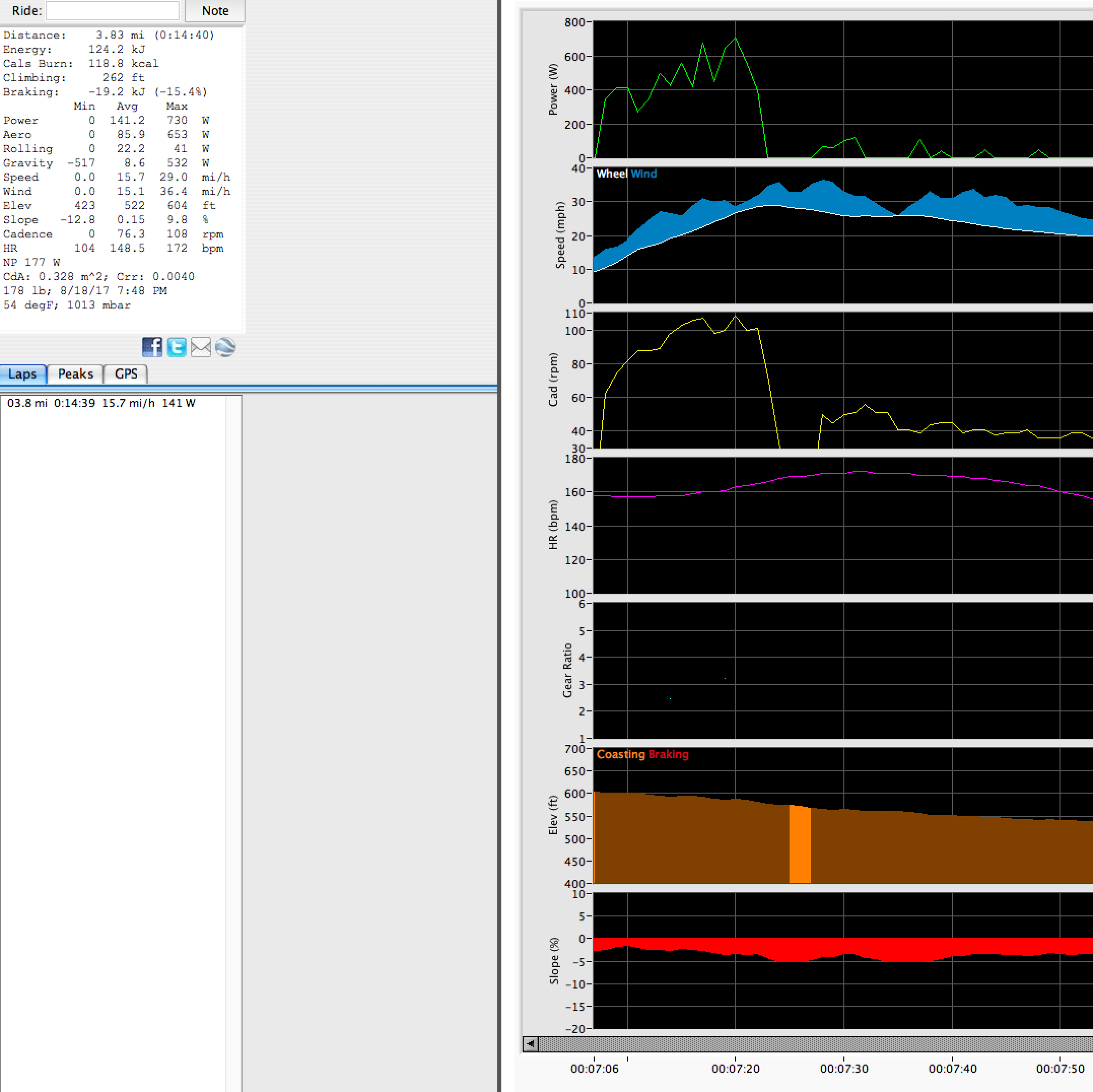
- Screen Shot 2017-08-20 at 8.01.00 AM.png (294.48 KiB) Viewed 5780 times
5) I then played with the profile, lowering CdA a bit, and watching the power spikes from 7:36 to 7:49. You're correct that the effect of CdA is more pronounced at higher speeds, so I tried to remove the 4 power spikes from 7:36 and beyond.
6) In the Edit Profiles menu I manually adjusted CdA (in this example, to 0.29), then clicked Accept. IMPORTANT: WHEN CHANGING CDA IN THE EDIT PROFILES WINDOW, MAKE SURE THE RADIO BUTTON IS SELECTED THAT HOLDS WIND SCALING CONSTANT.
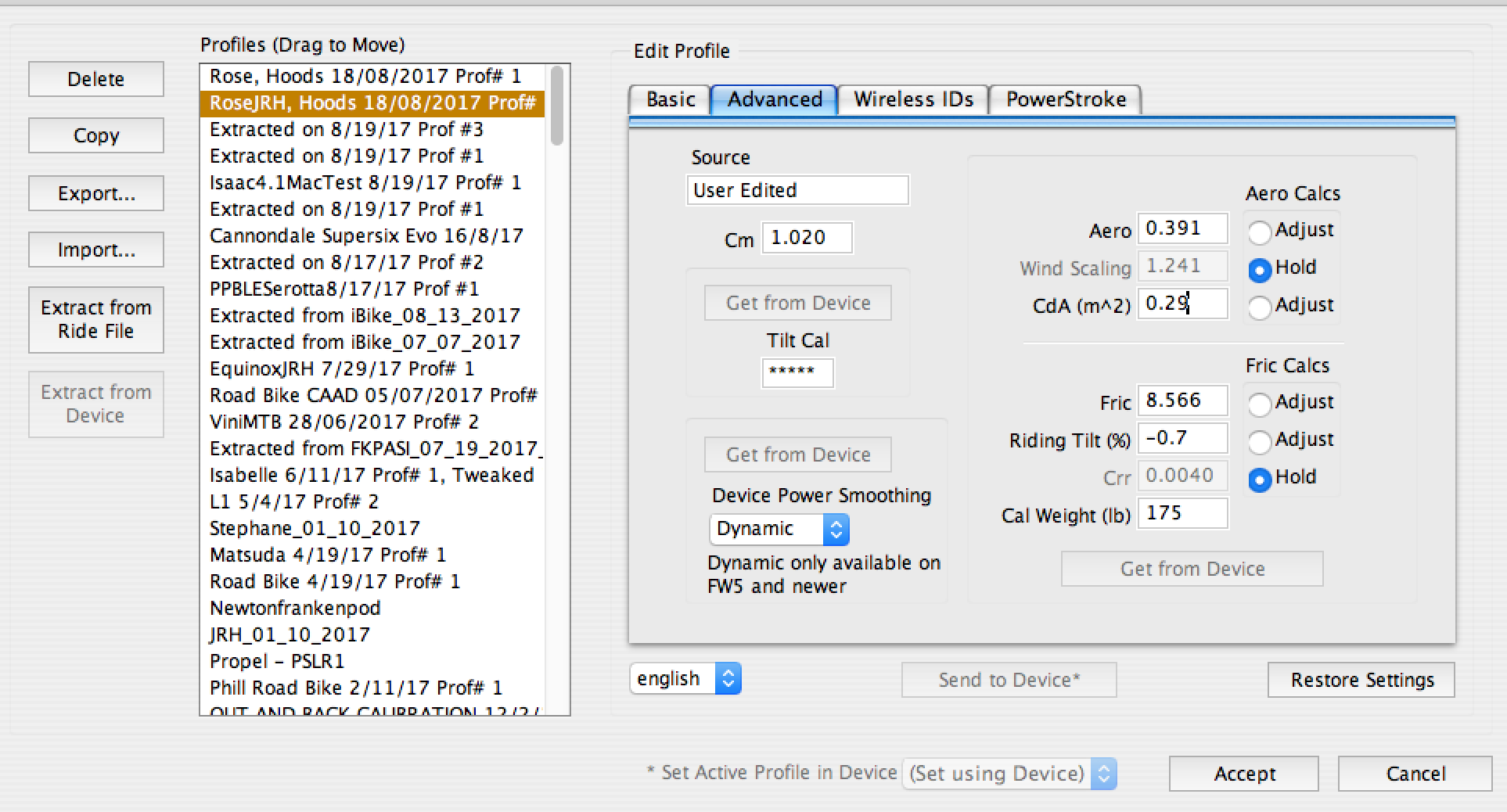
- Screen Shot 2017-08-20 at 7.58.23 AM.png (281.2 KiB) Viewed 5780 times
7) I then used the command to show the power output for the modified CdA:

- Screen Shot 2017-08-20 at 7.59.49 AM.png (25.37 KiB) Viewed 5780 times
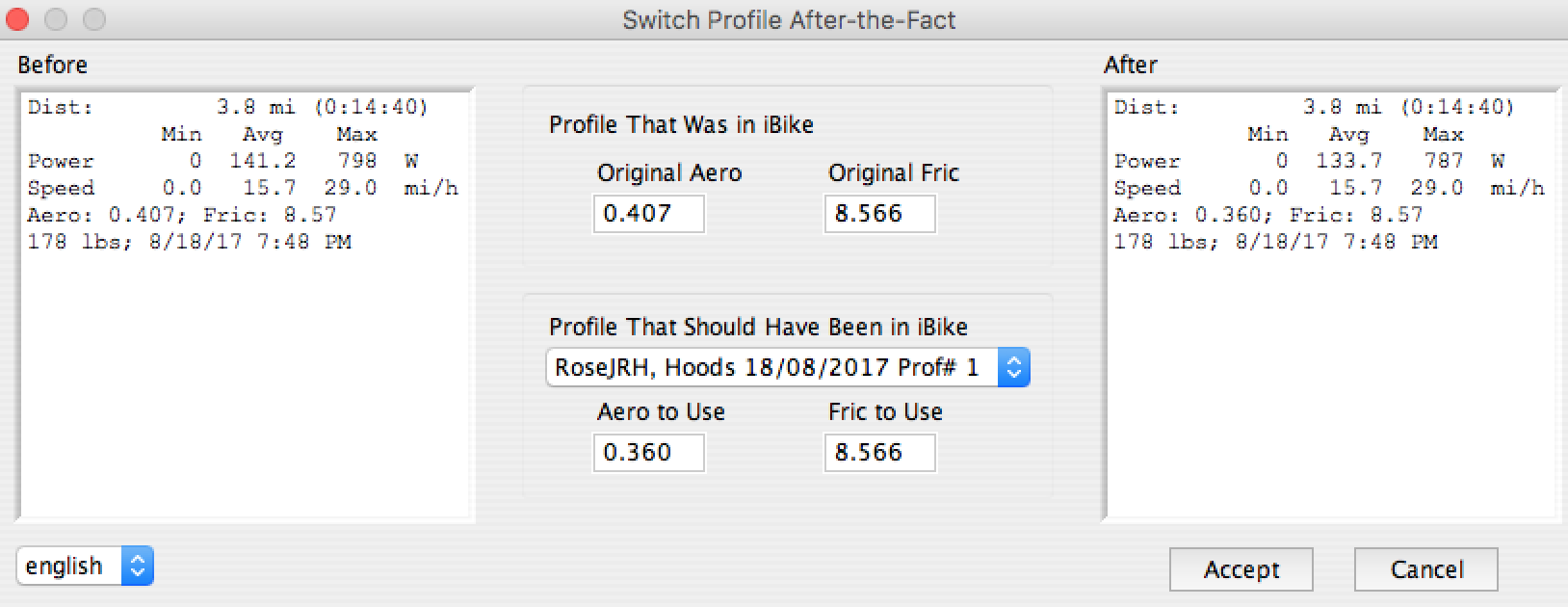
- Screen Shot 2017-08-20 at 8.02.19 AM.png (93.57 KiB) Viewed 5780 times
8) Here is the power curve with the 0.29 CdA
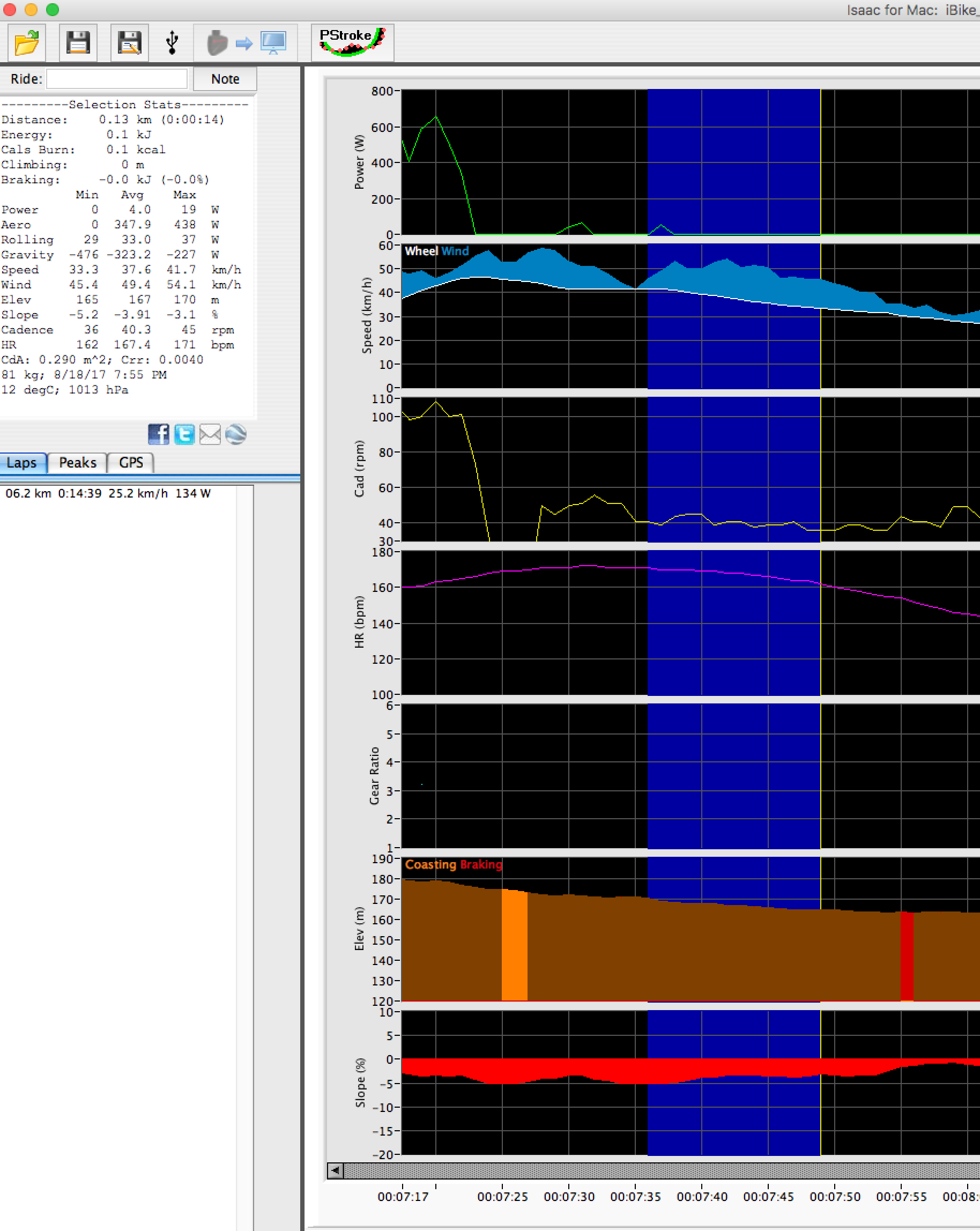
- Screen Shot 2017-08-20 at 8.36.18 AM.png (320.87 KiB) Viewed 5776 times
9) So, the 0.29 CdA "killed" 3 of the 4 the power spikes that start at 7:36 and beyond. The only question is, is 0.29 too low? Here, you simply have to do some playing around. You want the CdA to be as high as possible, such that it forces downhill watts close to zero. REMEMBER: you won't get it to be exactly zero.
10) After trying this with several values of CdA, I settled on 0.312. This CdA crushed three of the 4 peaks. Average watts from the three peaks in this region is 6W
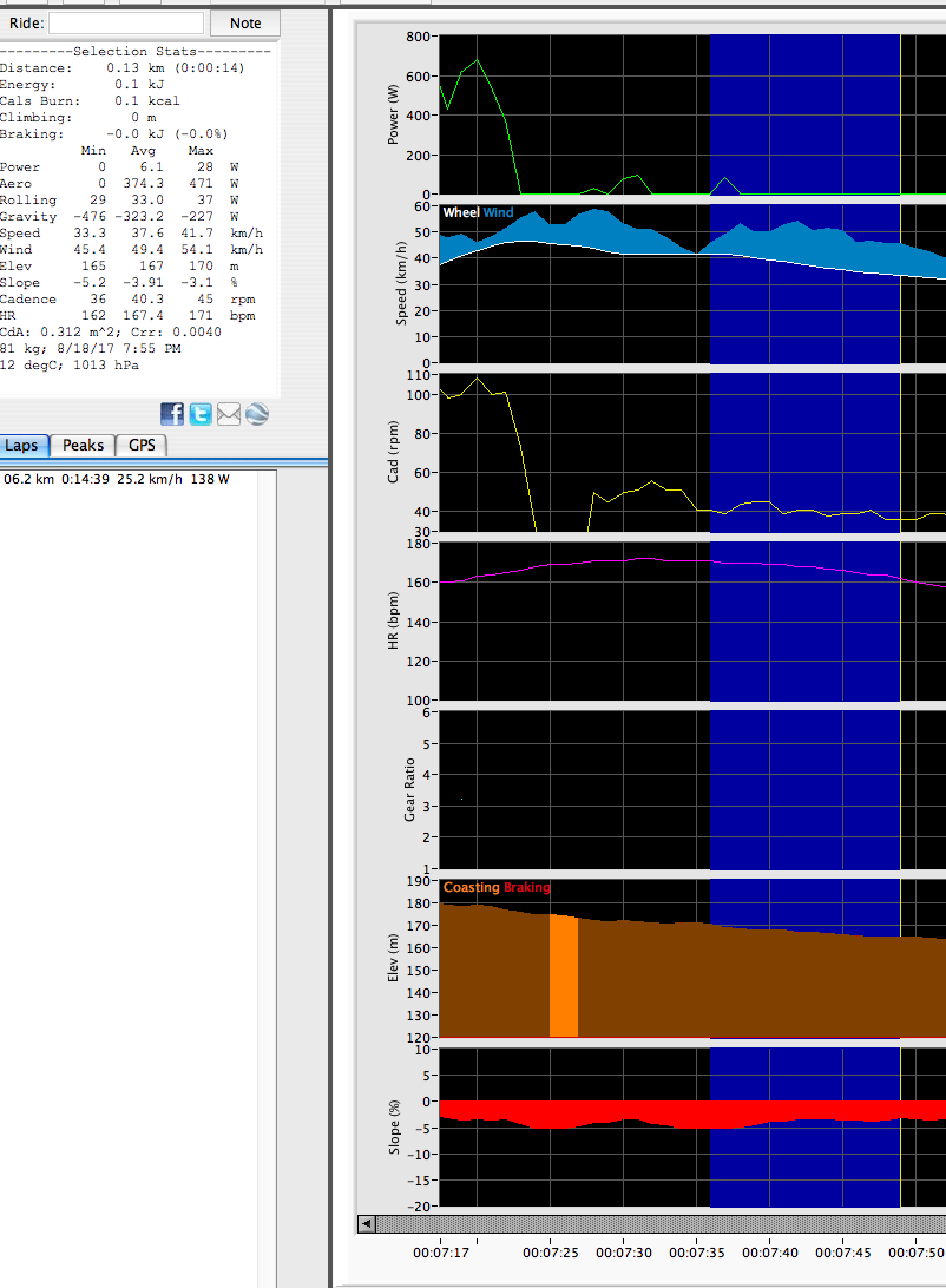
- Screen Shot 2017-08-20 at 8.45.32 AM.png (272.23 KiB) Viewed 5774 times
11) One way to check the reasonableness of the CdA is to compare the 6W "error" to the wattage you'd be producing on-the-flats at the same speed. That is, if riding on the flats (where CdA is important), what is your wattage, and what the effect of an 6W error?
I used analyticcycling.com to figure this out. In the highlighted section the bike speed is 10.44m/sec. So, riding on the flats in this ride position the wattage is 251W
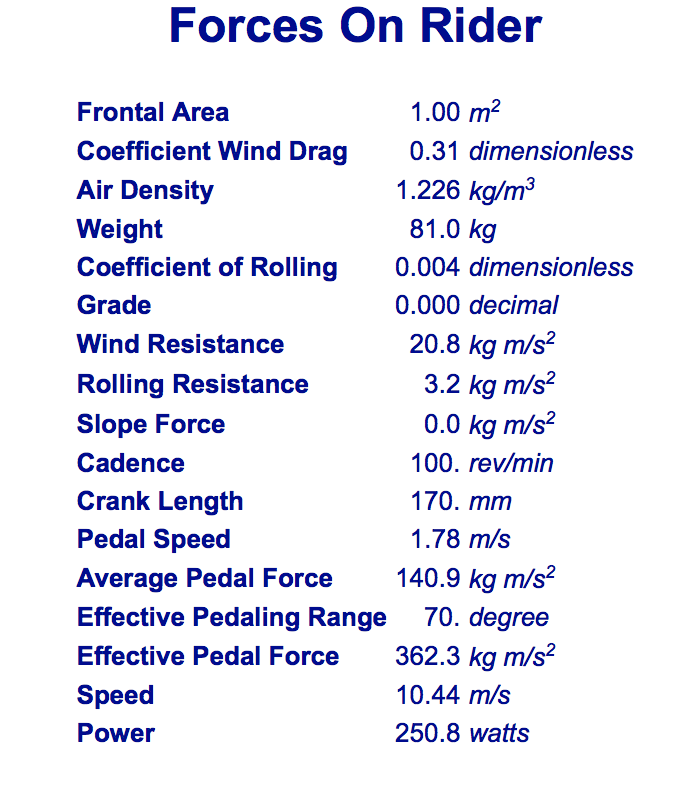
- Screen Shot 2017-08-20 at 8.47.35 AM.png (139.94 KiB) Viewed 5774 times
Assuming that the CdA "error" is 6W, the PP would measure 251+6=257W. This is an error of 2.4%, well within the measurement accuracy bounds of PP (or any other DFPM).
So, the coast-down estimate of your CdA is 0.312, a bit lower than the 0.328 that comes from PP setup.
What is the overall effect of this change? Your average watts for this ride file, at CdA of .328 was 141W; at .312, 137.9W.
So, "out of the box", your PP was close.
But it is a lot of fun to do these kinds of experiments!